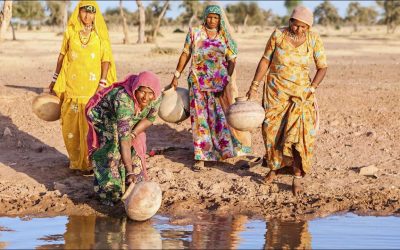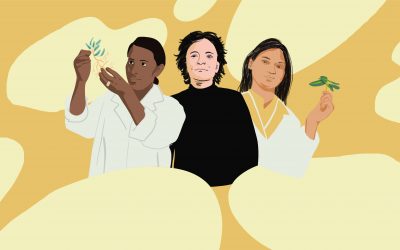PUBLICATIONS
Conceptual design of a micro-scale horizontal axis wind turbine integrated in the sustainable electrification of a rural village in Grand Mitsio Island
AUTHOR: Pulli Emilio
ABSTRACT
Gran Mitsio is an island (GMI) in Northern Madagascar where, as part of my Alta Scuola Politecnica curriculum, I collaborated on the multidisciplinary project ENVAO with the objective of kick-starting the sustainable electrification process for the rural village of Ampanitsoha. This thesis has been conceived as a follow-up to the ENVAO activity and aims at developing the conceptual design of a micro-scale horizontal axis wind turbine (HAWT) , relying only on easily accessible car spare parts to be locally realised and maintained. Following an initial background of the GMI context, an anemological analysis characterising the wind resource on the intervention area is detailed by demonstrating how the measured average low wind speeds are anyway exploitable to meet the inhabitants’ primary energy needs. After this preliminary research, an algorithm exploiting the Blade Element Momentum (BEM) theory is proposed to design and assess the power performances of two main blade geometries: the first consists in a constant chord and fixed stagger angle (CCFS) geometry which is more easily manufacturable compared to the second one characterised by a twisted and tapered (TT) geometry. Different HAWT configurations are obtained varying the blade profile staggering, the radial chord linearisation, the design tip-speed ratio and the number of blades. Among all the resultant cases, the configuration with CCFS blades displaying the best power performance registers a power coefficient (CP) of 0.29, whereas the best one employing TT blades reaches a value of 0.37 owing to its more efficient aerodynamic design. Subsequently, the strength assessments on the blade and wind tower sections identifies two HAWT configurations as the most optimal trade-offs between power performances and mechanical strength. The design process continues with the experimental characterisation of a car alternator aiming at developing an original control logic supported by a new regulation circuit to optimally coupling its power curve with the wind ones obtained from the BEM simulations. The results obtained from the experimental tests on the modified field electrical circuit composed of a magnetic pickup and two transistors in Darlington connection points out the efficient power coupling with the HAWT. The conceptual designs of a braking system based on the use of a synchroniser extracted from a car gearbox and an orientation system realised with a car-trunk gas spring conclude the whole design process. The manuscript is visually supported by CAD drawings highlighting the arrangement of the employed spare parts and offering interesting insights for possible future developments.
Assessment of ecosystem services regulating the carbon cycle: comparison between agricultural practices on Nosy Mitsio Island, Madagascar.
AUTHOR: Colombo Marco
ABSTRACT
Achieving food security and improved nutrition, and promote sustainable agriculture are major challenges to be tackled to attain the sustainable development goal “Zero hunger” (SDG 2). These challenges, already difficult by themselves, are complicated by the global change context, whose effects can further worsen already uncertain situations like that of substantial part of the African continent. Furthermore, food production has a great impact on climate through land use change and emissions from livestock breeding and agriculture, strongly affecting the possibility to reach the sustainable development goal “Climate action” (SDG 13). The research for efficient productive systems, able to combine food security and environmental sustainability, requires a multi-disciplinary approach taking into account the role of ecosystems and agro-ecosystems in guaranteeing both provisioning and regulating ecosystem services. The aim of this work is to compare different agricultural practices in terms of provisioning services and regulating services related to the carbon cycle. This approach is applied to the Nosy Mitsio island, in Madagascar, where an ongoing international cooperation project aims to guarantee food security to the local population. The comparison is made between a project of multi-familiar vegetables garden, the most common agricultural practice in the island (the so-called slash and burn) and an agroforestry system. The considered scenarios have been evaluated with a set of indicators that quantify their performances both in terms of food security and diet balancing and in terms of environmental sustainability, focusing on the ecosystem services linked to the carbon cycle (carbon sequestered and carbon stocked in plant biomass). Results shows that both vegetables gardens and agroforestry are valid alternatives to the practice of slash and burn in Nosy Mitsio. Vegetables gardens can guarantee a more stable food production and a more balanced diet while the agroforestry system ensures better environmental performances. Agroforestry could guarantee a food production that, even if with a lesser balanced diet compared to that supplied by vegetables gardens, is higher than the demand of a single village. This opens to the possibility of trading this surplus during the journeys to the mainland. A combination between the two practices could hence be the ideal solution to guarantee optimal performances in both the considered aspects.
Sizing and displacement of a stand-alone power generation system in Nosy Mitsio, Madagascar
AUTHOR: Bonserio Teresa
ABSTRACT
Nosy Mitsio, in Northern Madagascar, is a rural island, extremely poor in monetary terms, but rich in natural resources and opportunities. In this context, as part of the Alta Scuola Politecnica curriculum, the ENVAO multidisciplinary project was born, with the objective of designing a sustainable electrification strategy for the village of Ampanitsoha. This thesis work is the technical study supporting the implementation of the “Light Trail” proposal, which consists in the creation of stand-alone energy systems that are shared among clusters of buildings. The sizing and displacement of these generation points, along with the establishment of “energy neighbours”, is the focus of the present work. A deep knowledge of the village territory is the starting point for the development of such strategy. Therefore, this study starts with the creation of a map of the island’s landcover on OpenStreetMap, a collaborative world mapping database. Then, on the basis of housing and forests displacement, multiple electrification scenarios, using photovoltaic panels, are generated. Two methodologies are employed for this purpose. Following the first approach, eight scenarios are produced, each providing a different nominal installed capacity to a variable number of energy generation points. The connection of each point to its served facilities is chosen randomly. The second approach, instead, subdivides the village into pre-established energy neighbours, chosen according to the social structures already existing within the community. The energy systems are then sized by means of the MicroGrids Py model, a linear programming tool. An evaluation of the capital costs, for each scenario, highlights that the implementation of the one generated with the second approach allows for significant economic savings, as well as lower environmental and social impacts. Findings from this study suggest that electrification projects in rural contexts cannot disregard the framework in which the solution has to be established. Customization of the system features, according, for instance, to the pre-existing social and environmental elements, is imperative to increase the overall sustainability of the proposed solution.
Powering rural African communities. Unlocking involvement and creativity in renewable energy solutions through sustainable PSSD and user frugal innovation
AUTHOR: Reitano Diego
ABSTRACT
In the world, 759 million people live with no electricity. Three-quarters of them are found in Sub-Saharan Africa. A direct correlation between access to electricity and improved quality of life makes powering off-grid rural communities an urgent matter to tackle. With a population bound to double by 2050 and global warming increasing in severity, African countries face the additional challenge of finding innovative ways to meet the rising energy demand without falling into non-renewable energy production schemes. Opportunities to be leveraged are the virtually limitless reserves of renewable energy sources, and the growing efforts from nations and organizations to achieve the continent’s sustainable development. Within this broad context, this thesis explores the topic of renewable energy systems design and their integration in low-income rural African communities. More precisely, from the design perspective, it investigates whether there are optimal approaches to innovation and community involvement that can contribute to this goal and kick-start a more sustainable, resilient development. The research substantiates the idea that a Sustainable Product-Service System (S.PSS) approach applied to Distributed Renewable Energy (DRE) systems is likely the best strategy towards creating sustainable solutions from an economic, social, and environmental point of view. Moreover, it is put forward the idea that encouraging the local population to learn about and tinker with renewable energy-powered products can spark a series of frugal innovations that expand the space of solutions provided by the S.PSS+DRE system, ultimately tackling the more peculiar and hidden needs of various stakeholders. To encourage and help organizations in unlocking local users’ creativity and involvement, it is proposed a framework that would allow to spur user frugal innovations and integrate them into the renewable energy system. Finally, a possible application of such framework to Madagascar’s Nosy Mitsio Island exemplifies the proposed concepts and envisions a renewable energy-powered future for its community.
Articles
Bees, flowers and intensive agriculture
The bee is an extraordinary animal. Leaning out...
Women in leadership: Achieving an equal future in a COVID-19 world
08 MARCH –Today, in occasion of the...
Science is also “girl stuff”
In some fields more than others, gender gap is...



